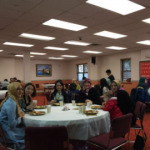The First and Last Pilgrimage
It was the ninth year of Emigration. The verse, “Pilgrimage to the House of Allah is a duty owed to Allah by all who can afford a way to it,” was revealed in the month of Dhu al-Qadah. Through this verse Hajj, or pilgrimage, had become an obligatory act of worship. When they reached the month of Dhu al-Qadah of the tenth year, our Prophet announced to his Companions that he was going to go to Mecca, in order to fulfill his duty of Pilgrimage. Upon this, Muslims from all around started flocking into Medina so that they too could perform their Pilgrimage together with our most beloved Prophet. After all preparations had been completed, five days before the month of Dhu al-Qadah finished, on a Saturday afternoon, the Muslims set out from Medina after they had performed the Noon Prayer. When they reached a place called Dhu’l-Hulayfa, the Messenger of Allah cleansed himself through ablution of his whole body, put on nice fragrances, and dressed in his special garment of consecration. He announced to his Companions that they were to make their intentions for both the Pilgrimage and the umra. Before heading out on the journey, he had informed his Companions about the many different aspects relating to their Pilgrimage. Our Prophet had also brought with him approximately one hundred camels as their sacrificial animals. The Messenger of Allah headed forward while chanting the recitations of talbiya. His Companions joined him and as the believers cried out,
“Labbayk Allahumma Labbayk. Labbayka la sharika laka labbayk. Inna’l hamda wa’n ni’mata laka wa’l mulka la shariyka lak,” they headed towards Mecca.
They followed the path they had used during the Emigration, and by the fourth day of Dhu al-Hijjah they had arrived in Mecca. Without any delay, our Prophet headed towards the Ka’ba, greeted the Rukn, and started to make the tawaf afterwards. As soon as he completed his tawaf, circling around the Ka’ba, he performed a two-rakah Prayer between the Ka’ba and the Sacred Station of Prophet Ibrahim. During this Prayer, he recited Surah al-Kafirun and al-Ikhlas. Then he came back to the Rukn, greeted it, and turned towards Safa. He completed the sa’y between the hills of Safa and Marwa, climbed atop the hill of Safa and after turning towards the Ka’ba and shouting out cries of exaltation, he raised his hands and prayed.
Starting from a Sunday, the Messenger of Allah spent four days in Mecca. On the eighth day of Dhu al-Hijjah he headed towards Mina, together with his Companions. A tent was put up for him in a place called Namira, and, there, our Prophet performed his five Daily Prayers.
On the ninth day of Dhu al-Hijjah, the day of Arafa, they came to the place called Arafat. In the middle of the valley of Arafat, in the afternoon, atop his camel Qaswa, the Messenger of Allah delivered his Farewell Sermon to the one hundred twenty thousand Companions surrounding him. In this sermon, he gave his last pieces of advice concerning the true religion of Islam. At the end of the sermon, he said, “O humankind! Tomorrow, they will ask you of me. What will you say then?” The Muslims replied, “You preached the Allah’s religion. You fulfilled your duty. We bear witness to this.”
Upon hearing this, our Prophet raised his blessed index finger, then turned it onto his community, and released it, saying, “Witness this O my Lord! Witness this O my Lord! Witness this O my Lord!”
Later on, our Prophet performed the waqfa, standing there facing the qiblah, until sundown. Following Muzdalifah and Mina, the sacrificing of the animals was carried out. After the Messenger of Allah completed the farewell tawaf, they headed back to Medina. This pilgrimage, in which Allah’s Messenger bid farewell to his Companions, was the first and the last pilgrimage that our Prophet would perform. The thousands of Muslims who had come with him on this Pilgrimage also went back to where they had come from and continued to live by and spread the one and true religion, Islam.
Related Posts
- February 20, 2014
- 0 Comment









